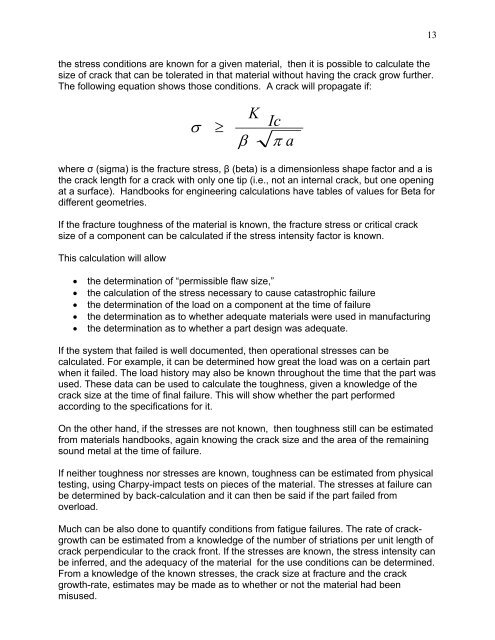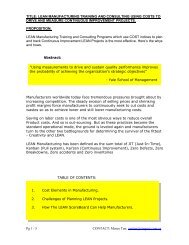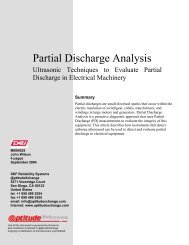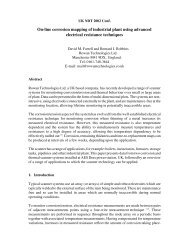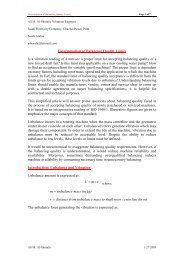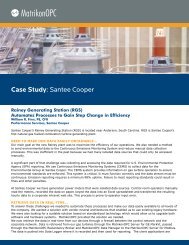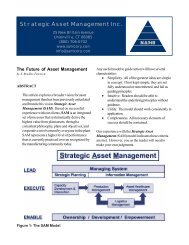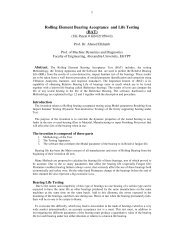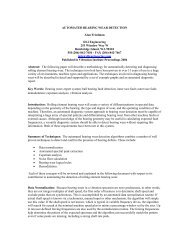A Re-Examination of Failure Analysis and Root Cause Determination
A Re-Examination of Failure Analysis and Root Cause Determination
A Re-Examination of Failure Analysis and Root Cause Determination
- No tags were found...
You also want an ePaper? Increase the reach of your titles
YUMPU automatically turns print PDFs into web optimized ePapers that Google loves.
13the stress conditions are known for a given material, then it is possible to calculate thesize <strong>of</strong> crack that can be tolerated in that material without having the crack grow further.The following equation shows those conditions. A crack will propagate if:σ≥βKIcπ awhere σ (sigma) is the fracture stress, β (beta) is a dimensionless shape factor <strong>and</strong> a isthe crack length for a crack with only one tip (i.e., not an internal crack, but one openingat a surface). H<strong>and</strong>books for engineering calculations have tables <strong>of</strong> values for Beta fordifferent geometries.If the fracture toughness <strong>of</strong> the material is known, the fracture stress or critical cracksize <strong>of</strong> a component can be calculated if the stress intensity factor is known.This calculation will allow• the determination <strong>of</strong> “permissible flaw size,”• the calculation <strong>of</strong> the stress necessary to cause catastrophic failure• the determination <strong>of</strong> the load on a component at the time <strong>of</strong> failure• the determination as to whether adequate materials were used in manufacturing• the determination as to whether a part design was adequate.If the system that failed is well documented, then operational stresses can becalculated. For example, it can be determined how great the load was on a certain partwhen it failed. The load history may also be known throughout the time that the part wasused. These data can be used to calculate the toughness, given a knowledge <strong>of</strong> thecrack size at the time <strong>of</strong> final failure. This will show whether the part performedaccording to the specifications for it.On the other h<strong>and</strong>, if the stresses are not known, then toughness still can be estimatedfrom materials h<strong>and</strong>books, again knowing the crack size <strong>and</strong> the area <strong>of</strong> the remainingsound metal at the time <strong>of</strong> failure.If neither toughness nor stresses are known, toughness can be estimated from physicaltesting, using Charpy-impact tests on pieces <strong>of</strong> the material. The stresses at failure canbe determined by back-calculation <strong>and</strong> it can then be said if the part failed fromoverload.Much can be also done to quantify conditions from fatigue failures. The rate <strong>of</strong> crackgrowthcan be estimated from a knowledge <strong>of</strong> the number <strong>of</strong> striations per unit length <strong>of</strong>crack perpendicular to the crack front. If the stresses are known, the stress intensity canbe inferred, <strong>and</strong> the adequacy <strong>of</strong> the material for the use conditions can be determined.From a knowledge <strong>of</strong> the known stresses, the crack size at fracture <strong>and</strong> the crackgrowth-rate, estimates may be made as to whether or not the material had beenmisused.


